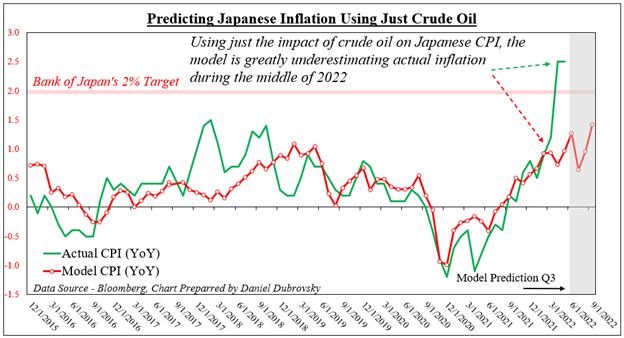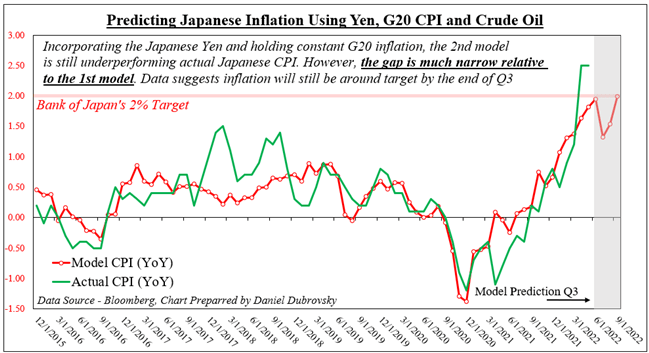The Japanese Yen was hammered by markets in the second quarter. USD/JPY shot by the 2002 peak, touching its highest since 1998. A key driver of the Yen’s weakness has been the Bank of Japan’s policy divergence from its major peers. While central banks like the Fed and RBA gave surprise hikes, the BoJ remained persistently dovish, making life difficult for its currency. On the chart below, USD/JPY can be seen rising as US Treasury yields outpaced their Japanese equivalent. Could this change ahead?
Chart Created Using TradingView
A key reason why the BoJ reaffirmed its ultra-loose policy is low Japanese inflation. This has been slowly changing. Local CPI was 2.5% y/y in May, above the central bank’s 2% target. The BoJ has historically struggled to bring inflation in target. Some of this is likely due to reasons outside of its control, such as demographics. But even Japan is starting to feel the pinch of rising prices. The island-nation economy is the world’s 4th largest consumer of oil, which has become more expensive.
In the second-quarter Yen outlook, I tried to predict Japanese inflation based on crude oil and coal, also factoring in time. By removing the lag from CPI data, I could use recent energy price data to estimate where Japanese inflation could go in the coming months. The approach correctly estimated inflation breaching the Bank of Japan’s 2% target in Q2. In this article, I revisited the original multiple linear regression model and simplified it by taking out the impact of coal. I then built a second model that tries to consider the Yen’s devaluation. But more on the latter shortly.
The first model below has an R-squared score of 41%. In other words, only 41% of the variation in Japanese CPI is explained by crude oil and time. More to the point, it greatly underestimated the actual CPI in May (0.97% y/y expected versus 2.5% printed).

The second model below tries to predict Japanese CPI by also factoring in the Japanese Yen and holding constant G20 CPI. This is to see if a devalued currency could be an inflationary force for the island-nation economy. This model has a higher R-squared at 60%, meaning that 60% of the variation in Japanese CPI is explained by the variables. The higher accuracy of the model suggests the Yen could be a key factor in driving inflation. Without the Yen, the accuracy drops to 53%.
This model still underestimated actual CPI in May (1.8% seen versus 2.5% printed). It does see a slowdown in early Q3 before inflation rises back to target. It will remain to be seen if the BoJ will spring into action. A general rule of thumb for traders is to not fight central banks. As such, a dovish BoJ should still work against the Yen. But, a combination of inflation near target and rising concerns about JPY’s level could perhaps help stabilize the currency in the months ahead.

Trading analysis offered by RobotFX and Flex EA.
Source



Please do not spam; comments and reviews are verified prior to publishing.